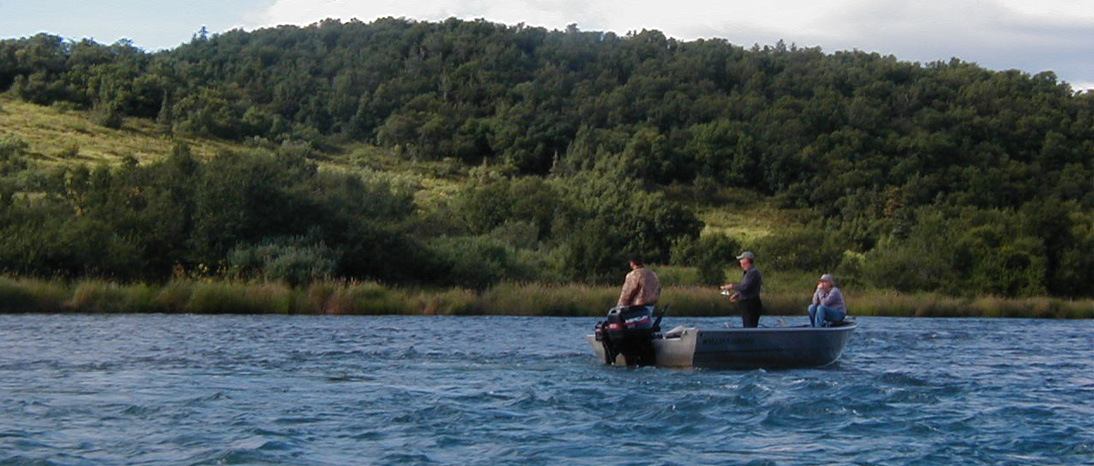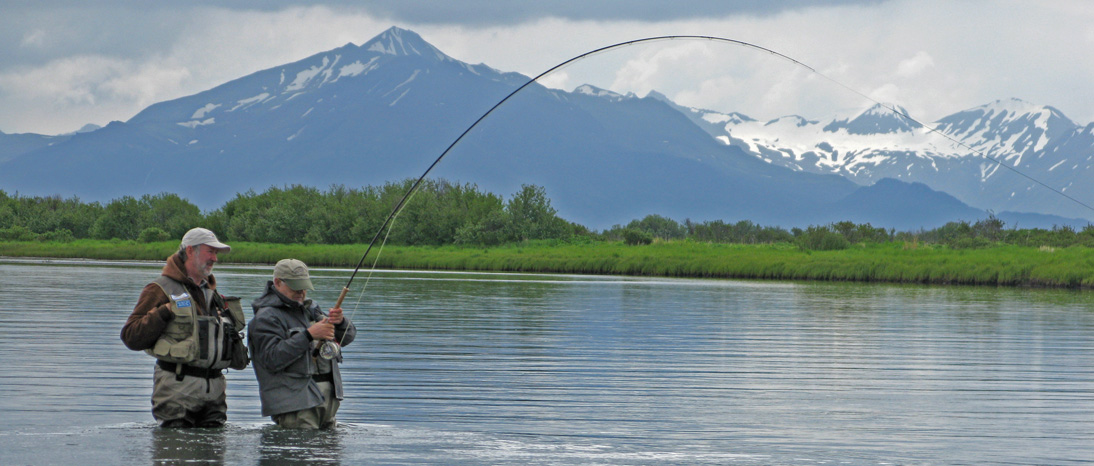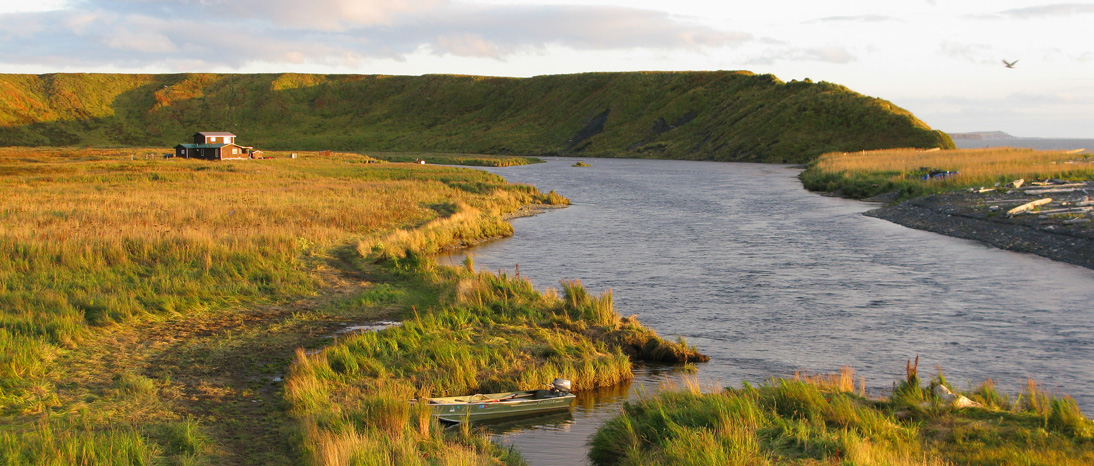Nushagak River, Alaska
With average annual run of approximately 100.000 chinook salmon (king salmon), the Nushagak River is without a doubt one of the world’s greatest destinations for chinook salmon fishing. It’s remote location and the limited sport fishing pressure it receives make it an ideal destiantion for sport fishermen that are looking for quality as well as quantity in their fishing experience.
Although the kings here don’t reach the incredible sizes of fish caught in the Kenai for example, they are much more numerous and the Nushagak receives just a fraction of the sport fishing pressure that the Kenai does. If we were to compare its statistics with the famous Karluk River in Kodiak, we’d find that the Nushagak receives on average 10 times as many kings. The average size of its kings runs around 20 to 25 pounds, however some of its fish can get up to around 50 pounds.
In the area we fish, the Nushagak is a wide dark bottomed river with clear waters. The river’s average width in this area is about 150 to 200 yards and the average depth around 6 to 12 feet depending on the moment of the season. The camp guides are all experienced veterans that know all of the main pools in the vecinity of the camp where the kings tend to congregate year after year on their way up the river though thay are also always on the look out for changes in the river’s features that may have led to new productive pools.
Our camp is located about 30 miles up river from its mouth in Bristol Bay, just above Portage Creek and the area of tidal influence. Because of its strategic location, during peak moments of the chinook run, each incomig tide can leave thousands of fresh bright silver kings in pools near the camp. During this time of the season, 100 fish days for a boat are not unheard of.
The most effective way of catching kings on the Nushagak is by drifting salmon eggs through the pools from boats. Generally fishing is by touch as the bait skips along the bottom of the river as your guide controls the boat’s drift through each pool. Bites can be very subtle, though most takes are felt quickly.
On the other hand, fly fishermen can achieve decent results with relatively heavy sink tip lines drifting fat freddies or big intruders through the pools. Fly fishing from the shore can be quite a challenge, first in getting the fly down to to the fish in some of the deeper fast moving pools and then in landing the fish, especially if you happen to hook a fresh 30+ pounder.
If at any moment guests decide they want a break from the arduous task of fishing for kings, they always have the option of fishing for sockeyes, chums or pike in some the back water sloughs.
Fishing days are generally split into two four hour sessions, one on the morning and one in the afternoon with a break at mid-day for lunch back at the camp. Fishing is from large flat bottomed skiffs with 150 horse outboard engines. Boats are shared usually shared between 3 or fishermen depending on your group size. Guides provide all the necessary equipment, lures and bait for fishing during daily guided outings. You ara aslo welcome to fish from the shore near the camp when the regular session is over.
The camp will provide conventional gear for use during the guided outings. Guests that would prefer to fly fish are advised to bring their own equipment. King salmon on a fly: one and two hand 9 to 11 weight rods with sink 400 to 700 grain sink tip lines and 150 yards of 30 pound test backing. Recommended flies include fat freddies large pink, chartreuse, orange and purple intruders or buck tail streamers. For spin fishing from the shore, we recommend 9 to 11 foot spinning rods with good reels such as the Shimano Stradic 4000 or 5000 loaded with 250 yards of 15 to 20 pound test line.
Fishermen are lodged in a simple wood lodging building with bunks. Meals are served in a large dining tent. Guests have access to a camp computer with Internet access by satellite. The camp has a shower building with hot water and outdoor johns.
The camp is located on the Nushagak River 30 miles up from its mouth in Bristol Bay in in Southwestern Alaska, about 30 miles west of Dillingham by air. To reach the camp, guest usually fly to Anchorage where they spend one evening. The next morning they normally fly regular commercial air from Anchorage to Dillingham. From Dillingham the camp is about 25 minutes away by floatplane.
Incredible! Large numbers of kings between 10 and 15 kilos. All from boats…
Location: The camp is located on the Nushagak River 30 miles up from its mouth in Bristol Bay in in Southwestern Alaska, about 30 miles west of Dillingham Dillingham by air.
Season: 17 de June to 24 de July.
Nº of rods allowed: N/A (The camp can accommodate up to 18 persons at a time).
Fishing methods allowed: Bait, spinning and fly.
Species: Chinook (king) salmon, chum salmon, sockeye salmon, pink salmon and coho (silver) salmon during the last part of the season. There are also resident populations of rainbow trout and char in addition to pike in the back water sloughs.
You may also like
Naknek River, Alaska
Alaska Peninsula
It is like going back in time to when fishermen had just discovered Alaska as a sportfishing paradise: incredible numbers of fish, wild untouched nature, beautiful scenery awithout a trace of civilization. This mixed program offers some of the hottest silver salmon fishing you will find on the home waters of Ocean River and fly outs to some of the other top rivers in the Peninsula for kings, chum and more.


